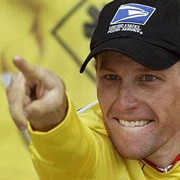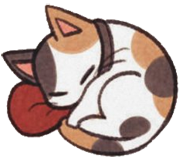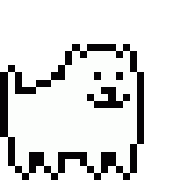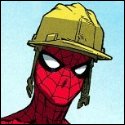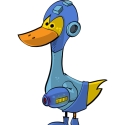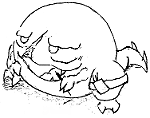|
Vermain posted:"Drawing" really refers merely to the ability to create three-dimensional form on a 2D surface (like a piece of paper or a computer screen). Once you learn how to do that and get an intuitive grasp of it, you've learned how to draw. 
|
|
|
|

|
| # ? Apr 29, 2024 18:06 |
|
neonnoodle posted:It makes it hard to see what you're doing and harder for others to see what you're doing and give you helpful critiques.
|
|
|
|
If you want to get better as an artist, it helps to take your work more seriously by using better materials. I understand the feeling of not wanting to "waste" good materials when you don't feel like you're ready yet, but I believe there is a subliminal thing where you give yourself an excuse not to work as hard on the final product (and thus not improve as fast) because it's going to look crappy anyway on lined paper. Getting a ream of white copy paper isn't that expensive and it will change how you relate to your drawing. If you want advice on where to go from here, your first drawing that you feel comfortable sharing, then a good next step would be to honor your own work with proper materials. It's not just for presentation, but for mindset and process.
|
|
|
|
Yeah. In my experience, having co-run a drawing group for a few years, people who draw exclusively on lined paper never improve. It seems like there's a psychological block there, that doing it on lined paper means it's just a doodle, it doesn't have to be good, that in the end it'll just be half obscured by a bunch of lines and then go into the bin anyway. Having talked to people about it, they make that kind of excuse. Maybe the correlation isn't causation here, but that's what I noticed. Basically take some pride in your work. No, don't get moleskines or whatever expensive pad. Those guys never improve either. I think copier paper or the extremely cheapo refill pads you get at Poundland is fine. Something half decent like that is practically free. Also get a decent pencil. Edit: it also makes people disinclined to spend much effort on offering advice and opinions if you won't put in sufficient effort yourself to get a sheet of plain paper. Fangz fucked around with this message at 13:35 on Apr 14, 2016 |
|
|
|
I was inspired by this thread, and started drawing every day again, challenging myself, and trying to improve. Something has happened, and I have lost all confidence in my art. I get anxious when I try to sketch something from life. I don't think what I draw is bad, but I don't think it's good, either. When I do draw, I feel my patience wearing out. It even gets to the point where I can't decide whether to use pen or pencil, or what to draw ("Drawing another stack of books? Ugh, what's the point?"). I started The Artist's Way, but I'm early in the process, and I'd like to draw again, because I do love drawing and I want to get better at painting as well. Any advice for my neurosis? Motivation? Exercises?
|
|
|
|
Show us something you've done.
|
|
|
|
Drawing from video/picture Sketch turned into pen and watercolor Shark decoration drawn from life Blind contour sketches I did of a roll of tape and a wood palette (drawn before lunch today) Edit: Phone Posting problems Franchescanado fucked around with this message at 18:04 on Apr 14, 2016 |
|
|
|
Fangz posted:Basically take some pride in your work. No, don't get moleskines or whatever expensive pad. Those guys never improve either. I think copier paper or the extremely cheapo refill pads you get at Poundland is fine. Something half decent like that is practically free. Franchescanado posted:
e: Actually, if you know watercolor, you could do ink paintings too. e2: Let me qualify that further. Ink paintings with a brush, with an effort to avoid painting any outlines. a hole-y ghost fucked around with this message at 23:14 on Apr 14, 2016 |
|
|
|
Franchescanado posted:
I think you are being too hard on yourself, usually people are their worst critics and as someone mentioned in one of the threads here (I think it was Mutata) they've seen plenty of artists who were perfectly capable talk themselves out of doing the work they really wanted to do just because of anxiety/fear. But if it helps, a lot of people deal with that anxiety and it's not something that is easy for most to just sweep under the rug or whatever. I think it's good in that it'll push you but you also got to try to give yourself a break. If you are practicing and putting in the work which you are, you need to allow yourself to sometimes make a drawing you don't like or make lots of drawings you think are garbage or whatever and that's perfectly okay. It doesn't mean you are bad or not learning, your ability to see and critique your work improves. As you get better, your standards also get better so sometimes it feels like you are stagnating or even getting worse when you are actually improving a lot. So my advice would be just remember to take care of yourself. Don't skip meals, get enough sleep, go for a walk or to the gym, etc. If you are feeling bogged down and exercises are a chore take a break to draw something in your comfort zone that's really fun for you, and try your best not to worry if it turns out good or bad, just make a drawing or make a painting and let it be what it is. That's okay! Doing exercises and learning new skills is really important but it's also important to do stuff that you enjoy and just enjoy the process of putting marks on paper or whatever it is that drew you to the arts in the first place, etc. Find a nice balance. It's a forum favorite and probably something you've seen but just in case this book is really good: http://www.amazon.com/Art-Fear-Observations-Rewards-Artmaking/dp/0961454733 I also like Robert Henri's The Art Spirit which has some really neat stuff in it: http://www.amazon.com/Art-Spirit-Robert-Henri/dp/0465002633
|
|
|
|
Franchescanado posted:Any advice for my neurosis? Motivation? Exercises? Take a break? Sometimes when I do a ton of art studies I get burned out esp it it's just doing gestures from photos. When I feel better I will return to basics like drawing shapes and making sure my fundamentals are fine. Also I find that I try to compare myself with younger and/or more talented artists online (quite a challenge) since I like to follow art sketechlogs/blogs. Art is one of my hobbies and I try not to be too hard on myself in the meantime.
|
|
|
|
Other alternatives are to give yourself a project to work on so you have a direction to aim for. Or do stuff for other people.
|
|
|
|
I'm doing this thing where I make a plasticine character, photograph it,print that photograph out, draw on the paper and then scan it again and keep repeating that. Here's one  Taken from this little plasticine character : 
Brazilianpeanutwar fucked around with this message at 14:29 on Apr 17, 2016 |
|
|
|
What are your guys's opinions on using fingers to smudge blend charcoal and pastels? I always find myself doing it even though I'm still in the learning phase for these mediums so I feel like I should be aiming to figure out how to blend my tones without resorting to smudging at first. Any words on this topic?
|
|
|
|
It's just 2 different techniques. Experiment with both as they both produce different end results. Generally speaking, smudging will overpower or flatten the tooth of a paper for a smoother feel whereas traditional shading is more likely to sit on top of the tooth giving a more textured feel. You can even shave a charcoal stick onto the paper and use your fingers to smudge out a "wash" of tone and then draw with erasers, etc.
|
|
|
|
I keep going into a loop of trying to improve myself, and just not getting anywhere because I either discourage myself or get distracted. Now that I'm working 9-5 in a low wage job that I have no wish to stay in, I decided it's time to stop loving about and just change my life. Third times the charm, but I'm going to draw every day, as much as I can, in between all the stuff I have to do that I don't want to. Previously I had more time when I was neet so I think I turned something that I love and feel inspired by into a chore. Not sure how I'll change that this time, but in the meantime I took a crack at the "bouncy ball" exercise I remember seeing in a friends copy of that animators handbook.  
|
|
|
|
Futaba Anzu posted:What are your guys's opinions on using fingers to smudge blend charcoal and pastels? I always find myself doing it even though I'm still in the learning phase for these mediums so I feel like I should be aiming to figure out how to blend my tones without resorting to smudging at first. Any words on this topic? As was said earlier, blending and non blended both have merits. I recommend using blending stumps rather than your fingers simply because you run less risk of accidentally getting charcoal finger prints on the piece. Here's an example of both techniques I did a few years back while in school. 
|
|
|
|
Futaba Anzu posted:What are your guys's opinions on using fingers to smudge blend charcoal and pastels? I always find myself doing it even though I'm still in the learning phase for these mediums so I feel like I should be aiming to figure out how to blend my tones without resorting to smudging at first. Any words on this topic?
|
|
|
|
ijyt posted:I keep going into a loop of trying to improve myself, and just not getting anywhere because I either discourage myself or get distracted. Now that I'm working 9-5 in a low wage job that I have no wish to stay in, I decided it's time to stop loving about and just change my life. Third times the charm, but I'm going to draw every day, as much as I can, in between all the stuff I have to do that I don't want to. Previously I had more time when I was neet so I think I turned something that I love and feel inspired by into a chore. Not sure how I'll change that this time, but in the meantime I took a crack at the "bouncy ball" exercise I remember seeing in a friends copy of that animators handbook. What up, ball bounce bud?  Mine's a ton rougher though; I'm not really used to working digitally. Think I'll try a pendulum next to practise spacing.
|
|
|
|
Disproportionation posted:What up, ball bounce bud? Man, if I had a penny every time I Ctrl-Z drawing a circle. I don't think I'm helping myself by drawing with my wrist on a tiny tablet.
|
|
|
|
dog nougat posted:As was said earlier, blending and non blended both have merits. I recommend using blending stumps rather than your fingers simply because you run less risk of accidentally getting charcoal finger prints on the piece. I just hate stumps so much because I hate the feel of scraping one across paper. though I will look into brushes as an alternative like a hole-y ghost said.
|
|
|
|
Q tips and cotton rounds for makeup are good for charcoal smudging and have the advantage of not getting your hand grease into the paper.
|
|
|
|
Futaba Anzu posted:I just hate stumps so much because I hate the feel of scraping one across paper. though I will look into brushes as an alternative like a hole-y ghost said.
|
|
|
|
Y'all are crazy. I get that they make a weird noise and it feels odd using them, but you can't beat the precision they offer.
|
|
|
|
dog nougat posted:Y'all are crazy. I get that they make a weird noise and it feels odd using them, but you can't beat the precision they offer.
|
|
|
|
Does anyone have any beginner resources for working with watercolour pencils? I just got a bunch of them as a gift and I'm not sure where to start.
|
|
|
|
Use them like regular colored pencils. Layer and use a brush to blend your colors. Ghost edit: wet brush
|
|
|
|
Hi guys, wondering if I can get some quick critique on something. I foolishly entered an art show at my workplace despite being in a more technical, non-design position. I've been painting a monster for the show, but showed it to my girlfriend who says it is not presentable due to bad lighting/shading/perspective/etc. I'm wondering if there's some quick ways I can fix the major problems with this piece so at least it doesn't look terribly out of place hanging on a wall for a bit:
|
|
|
|
Ccs posted:Hi guys, wondering if I can get some quick critique on something. I foolishly entered an art show at my workplace despite being in a more technical, non-design position. I've been painting a monster for the show, but showed it to my girlfriend who says it is not presentable due to bad lighting/shading/perspective/etc. I'm wondering if there's some quick ways I can fix the major problems with this piece so at least it doesn't look terribly out of place hanging on a wall for a bit:
|
|
|
|
Really starting to get burned out with the Draw A Box stuff. Between working 8-6 and having very little free time once I'm home, getting through the challenges is torture.
|
|
|
|
ijyt posted:Really starting to get burned out with the Draw A Box stuff. Between working 8-6 and having very little free time once I'm home, getting through the challenges is torture. Then take a break from those exercises and do something else for a while. Worst thing to do would be to get so burnt out that you stop drawing altogether. Find something to do that you would personally be excited about trying, bonus points if its outside your comfort zone.
|
|
|
|
Made an attempt at the second example in Lesson 3 of draw a box. I need more texture practice but I think my construction and form is slowly coming along.
|
|
|
|
neonnoodle posted:If you want to get better as an artist, it helps to take your work more seriously by using better materials. I understand the feeling of not wanting to "waste" good materials when you don't feel like you're ready yet, but I believe there is a subliminal thing where you give yourself an excuse not to work as hard on the final product (and thus not improve as fast) because it's going to look crappy anyway on lined paper. Getting a ream of white copy paper isn't that expensive and it will change how you relate to your drawing. If you want advice on where to go from here, your first drawing that you feel comfortable sharing, then a good next step would be to honor your own work with proper materials. It's not just for presentation, but for mindset and process. I read this short piece about writing, and it applies for art too, well, any discipline. Emphasis mine: quote:One of the few things I know about writing is this: spend it all, shoot it, play it, lose it, all, right away, every time. Do not hoard what seems good for a later place in the book, or for another book; give it, give it all, give it now. The impulse to save something good for a better place later is the signal to spend it now. Something more will arise for later, something better. These things fill from behind, from beneath, like well water. Similarly, the impulse to keep to yourself what you have learned is not only shameful, it is destructive. Anything you do not give freely and abundantly becomes lost to you. You open your safe and find ashes. https://www.nytimes.com/books/99/03/28/specials/dillard-drop.html
|
|
|
|
Any advice for tablets? I have a old Intuos 3 but it takes me 3x as long to draw with 25% quality drop for each drawing. However as much as I like traditional art I find it easier to start up with digital painting due the low material commitments.
|
|
|
|
I drew a thing. Perspective is a little wonky in spots but I think it turned out ok. 
|
|
|
|
Vatek posted:I drew a thing. Perspective is a little wonky in spots but I think it turned out ok. The level of detail and shading makes it okay. In future though, try not to draw with your wrist since it limits your stroke length and is partly responsible for your chickenscratch lines. If you drew longer lines with your shoulder, and lightly overshoot them, and provided they're straight enough, you'll produce some construction lines that will give you a better look at the perspective.
|
|
|
|
@Vatek Bulky machines are my favorite, makes you feel like you have a good grip on someting. The square grip looks uncomfortable though. I have a tip from someone that could help you get more out of this idea than one drawing. It's in a video with MarkCrilley advertising one of his books; features a story that simulates learning the fundamentals of drawing with a mentor. https://www.youtube.com/watch?v=LHwYawKK98c At 10:30 One of the lessons talks about a common rut budding artists fall in to with drawing well detail objects that are only floating in a canvas. Take your objects and use them in a scene in any way you see fit (there's more ways you could interpret it than an object sitting on a table). You could start by drawing some floating objects to establish what you're working with, then transfer them into some form of composition. You get more millage out of an idea and solidify it rather than always having to come up with a new thing for the next drawing. Artists say the best way to learn is "DRAW DRAW DRAW" so this is a good excuse. RasterPunk fucked around with this message at 20:31 on Jul 8, 2016 |
|
|
|
Hello Self Taught Thread. I'm teaching myself how to draw after years of telling myself I couldn't. Here's some stuff I drew in no particular order. Not bad for a total of a month and two weeks of sitting down everyday for 30 min to almost 3 hours. I drew his gun too small so up-scaling it made it look awful.  Boss from Ghost 1.0.  A bonfire from Dark Souls 1.  A flightless pack bird from a popular series of video games.  And the Party Mix girl from a thumbnail of an electro-house mix video: https://www.youtube.com/watch?v=AW-AuPS41pM
|
|
|
|
You're lapsing into iconography. I think cause of the focus on outlines. Try to consider the geometry of the shadows or shapes involved. To demonstrate this descending of technique, look at the thumbnails bracelets and then the ones you drew. There is no space between the top bracelet and the second. While your proportions are more equal in the thumbnail sketch, the focus on drawing outlines has misled your eyes: you define an arbitrary section of the shading gradient as the outline and this makes the shape of the geometry suffer. Take a look at her breasts or her right wrist. Demanding outlines worked on the face, but that's because the contrasts were so high. I think you'd benefit from breaking a subject, even a photo or flat subject, into squares and transferring squares to your medium. This breaks your own iconography down and forces you to consider the shading, proportions, etc of a very small region that might appear meaningless or chaotic initially. This is also a good time to try to work with 3d still lifes or subjects. This breaking of a subject into squares is rudimentary but gets you in the right track to force you to draw what you see and not what you think you see. Eventually you'll break subjects into more parts or shapes that comprise them rather than a strict grid that is detached from the work or subject. Draw what interests you though, but with failure in mind. If you set out with a specific trait you want to work on, you'll learn faster and faster as you need or become "adequate" (in your mind) at something in order to fail and then succeed in something else. I hope my tone isn't bad. I'm still learning a lot and by no means an expert. I'm extrapolating a lot from my own drawing and writing experience.
|
|
|
|
So I've been poking around in the OP and in other threads looking for good videos/courses to learn fundamentals (perspective, form, proportion, etc) with. Does anyone know any good online courses or videos that are decent quality? So far I have looked at stuff like Pencil Kings, Drawspace, and CTRL+Paint, but I'm reallllllly picky on spending my money on a course without knowing how good it is. I don't mind spending a subscription fee or anything, or shelling out $100 for a large online course, but don't want to spend poo poo tons of Currently, I'm watching Sycra and Proko on YouTube,leaning towards a PencilKings subscription, and poking around in Loomis' books. I do a lot better when something is structured, though, hence the reason looking for a paid course. InevitableCheese fucked around with this message at 16:42 on Jul 20, 2016 |
|
|
|

|
| # ? Apr 29, 2024 18:06 |
|
this is a super good post and should be helpful for anyone starting out in drawing, especially the bit on iconography (the tendency to conceptualize objects discretely from their context); I'd like to add that this grid technique is a great tool for anyone who needs to get proportions accurate, whether it's literally drawing a grid on a photo reference or picturing a grid as you look at a subject (and grids divided into thirds are generally the simplest, most convenient sort, though more squares lend more accuracy)
|
|
|


